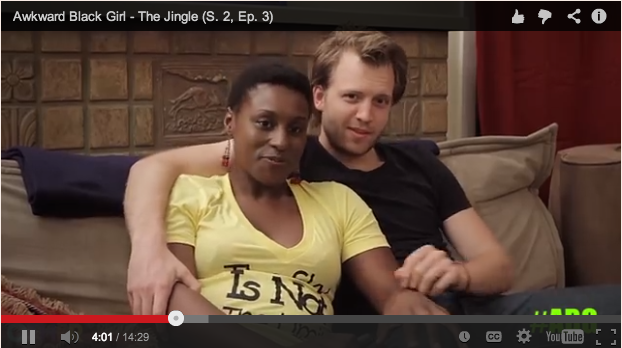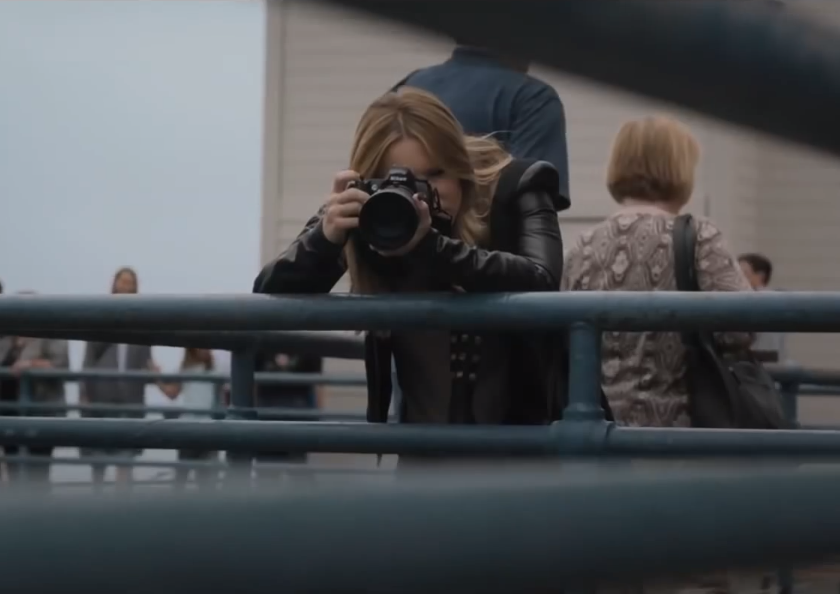The Internet broke the network bottleneck. Through platforms such as YouTube and Vimeo, creators release series directly to fans who follow shows and share them with friends. Web-content creators can write stories in whatever length, style and genre they choose, on their own schedule, and with actors of their choosing. The result is a truly open television ecosystem, where creators, talent and fans work together to realize stories they want to see.
Transforming Hollywood’s April 4 panel on Indie TV will take a look at that ecosystem by chatting with top web creators. The panel is moderated by Aymar Jean Christian, assistant professor of communication at Northwestern University, who says it is “by far the most exciting panel [he’s] ever convened.” The reason for the excitement? “The creators on this panel have written or distributed multiple smart and funny series that expand the sitcom, romantic comedy, and drama television genres.”
Below, Christian breaks down why he’s so excited to engage each of our panelists in conversation.
ADAM GOLDMAN, WHATEVER THIS IS
“In the indie TV market, creators produce stories in whatever size fits the narrative. Episodes of Adam Goldman’s first series, The Outs, ranged from 12 to nearly 50 minutes. Each installment is scaled to let the drama unfold as naturally as possible. For his next series, Whatever this is, Goldman took a different approach, and, having raised more funds on Kickstarter, released six half-hour episodes. Whatever this is gives viewers a robust picture of life as a creative worker — or rather how uncreative and sad that life can be.”
JAY BUSHMAN, THE LIZZIE BENNET DIARIES
“On the other hand, Jay Bushman’s work on The Lizzie Bennet Diaries expands TV narrative beyond the episode to include other platforms where fans can engage with characters. The Lizzie Bennet Diaries isn’t the first interactive series — we can think of The Spot in the mid-90s or lonelygirl15 in the mid-00s — but it is a best practices case study for the social media era.”
NUMA PERRIER, BLACK & SEXY TV
“Black & Sexy TV, which Numa Perrier co-founded with partner Dennis Dortch, has grown into a hub for the best acted and cinematically intimate romantic comedies and dramas on the web, helping revive a part of the black TV and film market that’s been challenged in recent years. Numa also stars in the network’s popular series, The Couple, where she breathes life into a character without a name.”
ISSA RAE, THE MISADVENTURES OF AWKWARD BLACK GIRL
“One of the first creators to demonstrate the power of Kickstarter to help fund and raise awareness for web comedies like The Misadventures of Awkward Black Girl, Issa Rae has continued to release series from other black TV writers on her YouTube channel while she develops for and works in television.”
AMY RUBIN, LITTLE HORRIBLES
“Amy Rubin’s Little Horribles is a series without peer on television, a comedy of errors recalling Louie or Seinfeld but focused on a self-indulgent thirtysomething lesbian in Los Angeles. Little Horribles, and many other web series like F to 7th, Pursuit of Sexiness, and The Actress, which Rubin’s Barnacle Studios’ distributes, is how writers use the short-format to their advantage and focus the humor to fit in a single location. For this strategy to work, producers have attract great actors, who respond to strong writing.”
BRAD BELL, HUSBANDS
“Brad stands out as a creator who writes and stars in a sophisticated show that rivals, even outdoes, a lot of network TV sitcoms starring gay characters. While it’s hard to single out what works for a show, one of the clear strengths of Husbands is its crisp writing, anchored by Brad’s engaging performance. Husbands gracefully mines and challenges stereotypes while leaving plenty of room for broad and physical humor.”
Christian respects indie TV creators so much because “they are very aware of what their audiences want, what their actors and collaborators want, and when to break the rules of medium. It takes a genius to master such a broad set of skills.”
Don’t miss a fascinating look into this aspect of the transformation of television. To buy tickets, visit https://transforminghollywood.tft.ucla.edu/conference/tickets/.




